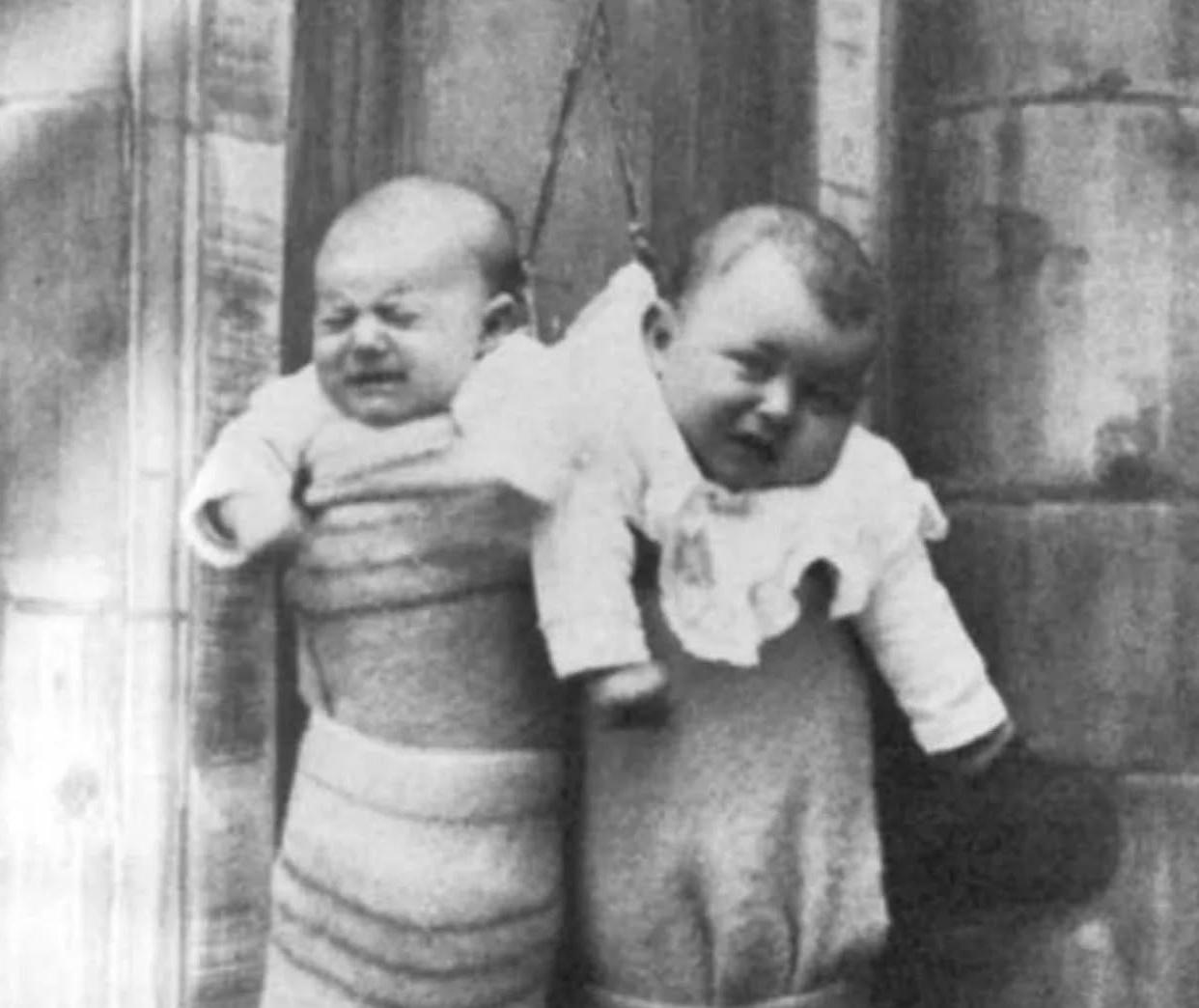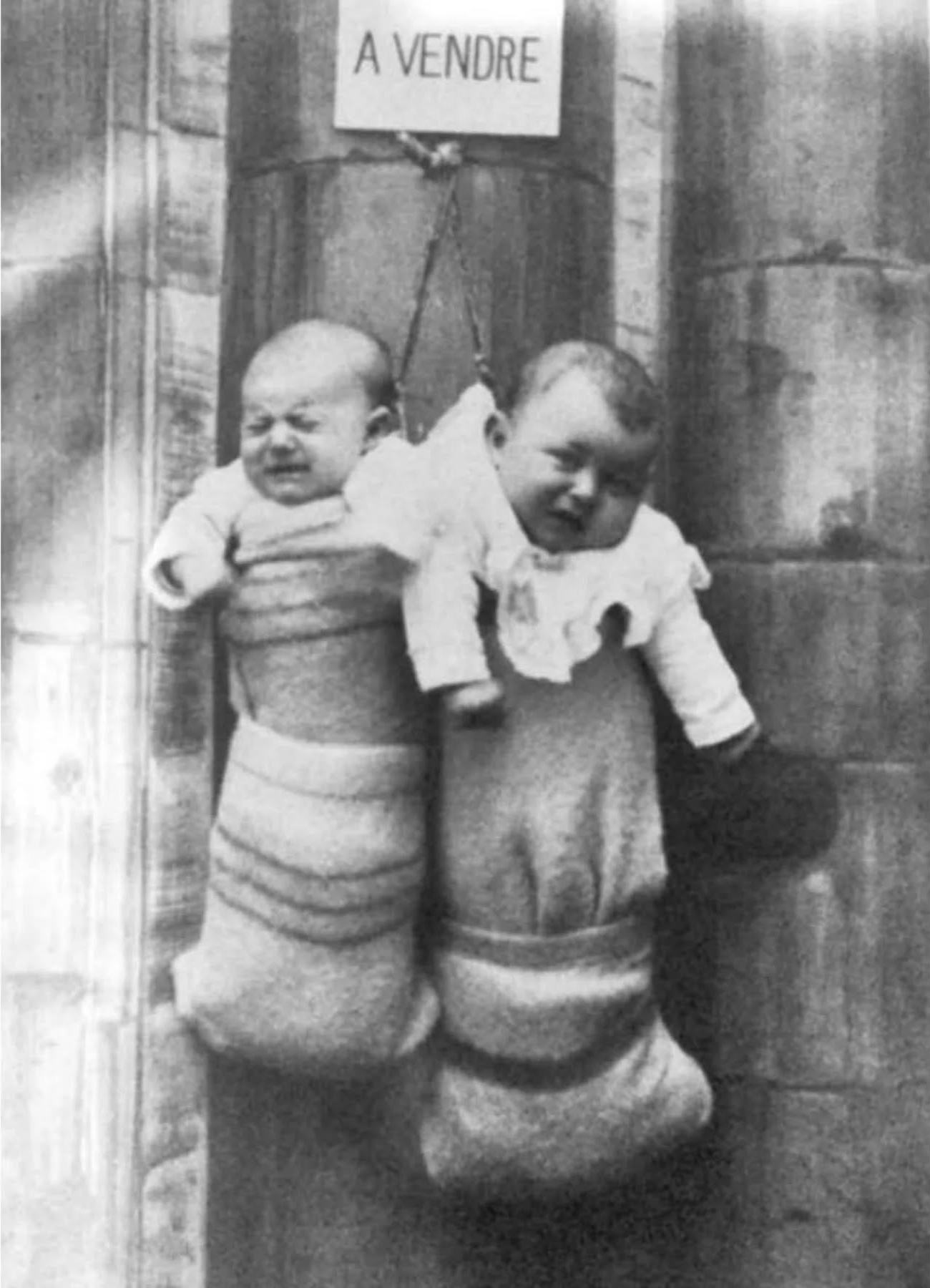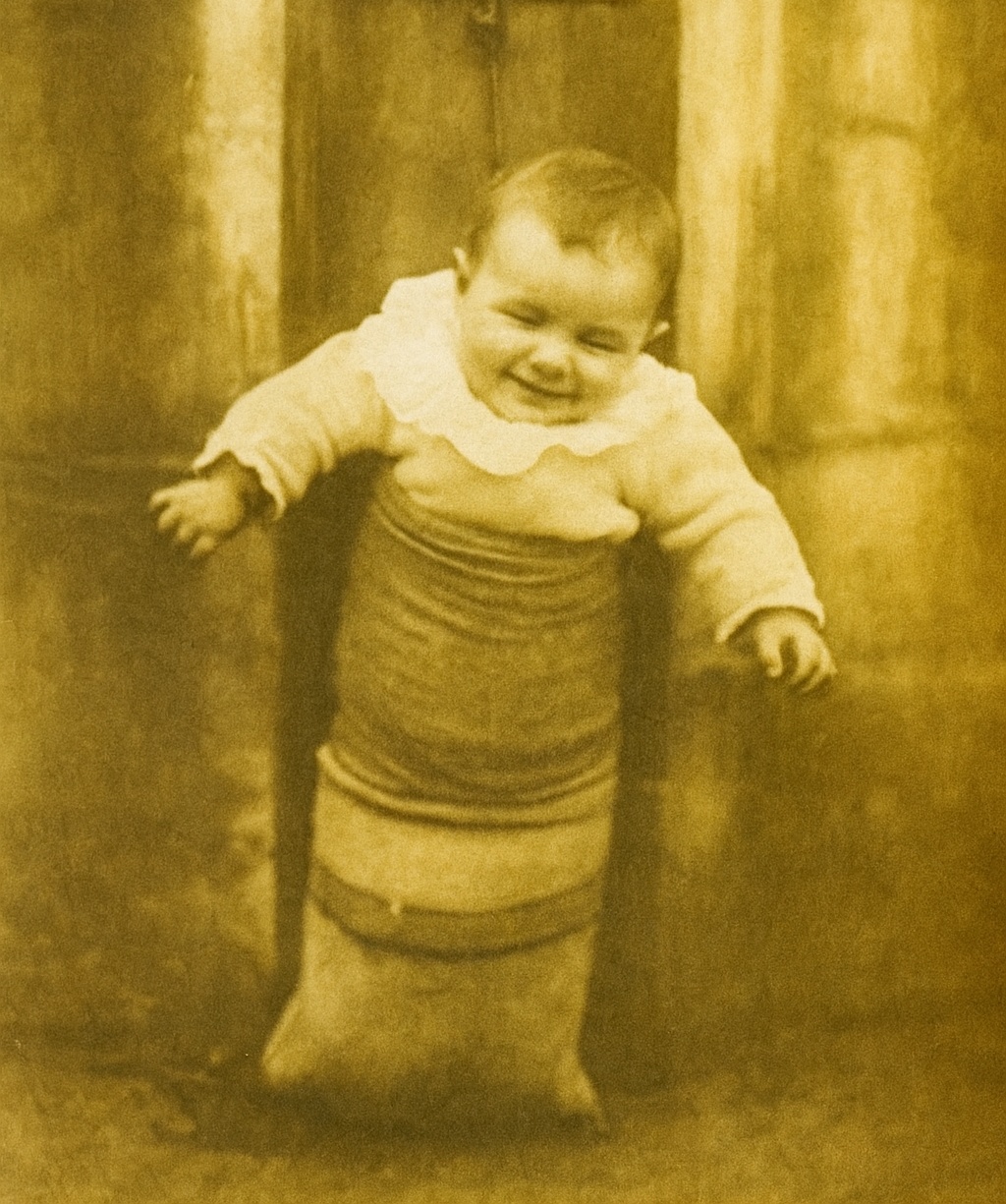The Forgotten Children A Heartbreaking Glimpse of Desperation and Hope in Postwar Italy

A haunting photograph from 1940s Italy captures an unthinkable moment in human history — two infants suspended in woolen sacks beneath a handwritten sign that reads “À Vendre,” the French words for “For Sale.” The image, taken in the bleak aftermath of World War II, reflects the depths of despair faced by families torn apart by conflict, hunger, and loss.
In the years following the war, much of Europe lay in ruins. Cities had been destroyed, economies had collapsed, and social systems that once supported families were gone. For countless widows, refugees, and displaced parents, survival was a daily battle. Without access to work, shelter, or aid, some were forced to make unthinkable choices — including leaving their children where someone with more means might find them.

The sign, often misunderstood, was not a literal invitation for trade. It was a desperate plea — a message written by parents who had reached the end of all options. At a time when formal adoption programs barely existed, these public acts were heartbreaking attempts to save their children from starvation. To modern eyes, the image is almost unbearable, yet for those who lived it, such acts were expressions of both surrender and hope.
Across post-war Europe, similar stories unfolded. With infrastructure destroyed and relief slow to reach rural communities, families relied on the kindness of strangers. Many children found homes through informal networks or local compassion, while others disappeared into the chaos of rebuilding nations. These photographs, rare and painful, serve as silent witnesses to the individual suffering behind historical statistics.

The image from Italy continues to resonate decades later — not as a spectacle of misery, but as a reminder of what happens when social safety nets collapse and compassion falters. It urges us to remember that every conflict leaves behind not only ruined cities but broken lives.
Remembering this photograph is not about dwelling on sorrow but about understanding the cost of indifference. It challenges us to ensure that no generation again faces such hopelessness, that no parent feels forced to choose between love and survival. The children in that image, unaware of their circumstance, became symbols of resilience — a call for empathy and responsibility that still echoes through time.









